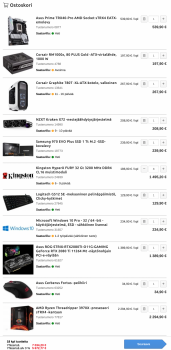I know this is a dead horse to beat, and for quite a long time now.
Need a workstation for architectural practice, for design and documentation, and including presentations and everything there is to it.
I'd have a hard time persuading my business partners to purchase for me one of those new Mac Pro's. I have played that PC versus Mac game online many times, just like many of us already have done. For us a workstation could cost something between 5000 to 7000, we think. With 7000€ with finnish 24% VAT included, I can for example choose either of these (see below):
A PC build:
AMD Ryzen Threadripper 3970X
24 32c/64t
256GB RAM
1 TB NVMe
RTX 2080 Ti 11GB
Win 10 Pro
+ motherboard, powersupply, cooler, mouse+keyboard and such.
total: 7034,20€ (incl vat(
An Apple Mac Pro:
Intel Xeon W 8c/16t
32GB RAM
1 TB Flash
AMD Radeon 580X 8GB
Mac OS Catalina
+ mouse and keyboard
total: 7099€ (incl vat)
The difference is huge if you consider performance.
Personally I like MacOS better. Mojave behaves alright today. Catalina is not near stable enough for our apps. So it's not even advisable to buy a Mac Pro right now because you can't choose OS version (this is the situation with OS X almost every year though).
Ok, there is not so much to upgrade with that AMD build. Memory is the max. CPU is the second best there is. You CAN upgrade the GPU, power supply and SSD easily and at good price point.
Mac Pro can be upgraded too of course. Choices are very limited with GPU. RAM upgrade is ok and the max ram is huge enough even with those lower xeons. CPU upgrades could be really pricey later on, because this xeon W series is outdated already, and a new socket is coming from intel again.
I believe I have no choice here. An iMac is not quite enough, and iMac Pro is a completely sealed box I hate, no user RAM upgrades, jeez. I don't warm to eGPUs either, though it is an option. A little bit clunky and pricier tha PCIe GPU.
Attached example builds from a local shop and from Apple.






